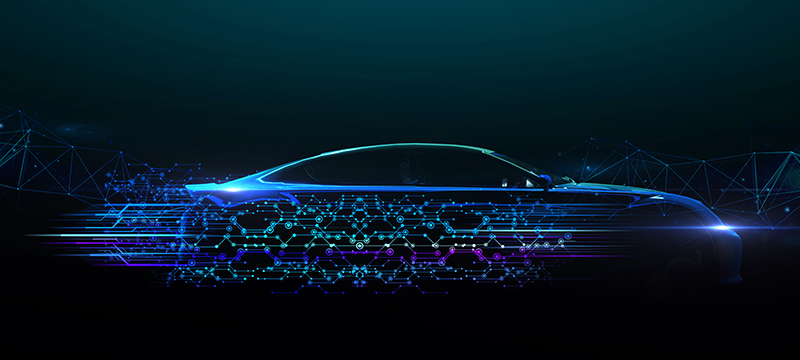
The Internet of Things (IoT) in the Automotive Market: Driving the Future of Transportation


The Internet of Things (IoT) has been a transformative force across various industries, and the automotive sector is no exception. With the advent of IoT technology, the way we design, manufacture, operate, and interact with vehicles has changed significantly. In this article, we will explore the impact of IoT in the automotive market, its key applications, benefits, and the future of connected vehicles.
What is IoT in the Automotive Market?
IoT in the automotive market refers to the integration of internet-connected devices and sensors into vehicles to collect and exchange data. These devices and sensors are embedded throughout the vehicle, and they communicate with each other, with the vehicle itself, and with external networks. This connectivity enables a wide range of applications and services that enhance the safety, efficiency, and overall driving experience.
Key Applications of IoT in the Automotive Market
1. Telematics and Vehicle Diagnostics
IoT technology allows vehicles to collect and transmit data about their performance and health. This data includes information about engine status, tire pressure, fuel consumption, and more. Vehicle owners and service centers can access this information for preventive maintenance and timely diagnostics, reducing the risk of breakdowns and costly repairs.
2. Connected Infotainment Systems
Infotainment systems in modern vehicles are becoming increasingly sophisticated, thanks to IoT. Drivers and passengers can access real-time traffic data, streaming music, weather information, and even control smart home devices from their cars. These systems also offer voice-activated features for safer and more convenient use.
3. Vehicle-to-Vehicle (V2V) Communication
IoT enables V2V communication, allowing vehicles to share information with nearby vehicles. This technology has the potential to enhance road safety by alerting drivers to potential collisions, sudden braking, or other hazards. V2V communication can help reduce accidents and traffic congestion.
4. Autonomous Driving
The development of self-driving cars heavily relies on IoT. Autonomous vehicles use a multitude of sensors, cameras, and connectivity to navigate and make decisions. These vehicles constantly exchange data with other vehicles and infrastructure, creating a network that enhances safety and efficiency on the road.
5. Fleet Management
Fleet operators can benefit from IoT by tracking the location, performance, and maintenance needs of their vehicles in real time. IoT solutions provide insights into driver behavior, fuel efficiency, and route optimization, leading to cost savings and improved operational efficiency.
Benefits of IoT in the Automotive Market
The integration of IoT in the automotive sector offers several key benefits:
1. Safety Improvements
IoT technologies enhance safety through features such as collision avoidance systems, lane-keeping assistance, and adaptive cruise control. These systems can help prevent accidents and save lives.
2. Reduced Maintenance Costs
Connected vehicles can alert drivers and service centers to potential maintenance issues, reducing the likelihood of costly breakdowns. Predictive maintenance ensures that vehicles receive maintenance when it’s needed, not just according to a set schedule.
3. Enhanced Driver Experience
IoT-powered infotainment systems provide entertainment, navigation, and connectivity options that make the driving experience more enjoyable and convenient. Drivers and passengers can stay connected, informed, and entertained while on the road.
4. Traffic Management and Fuel Efficiency
IoT-based traffic management and navigation systems provide real-time information about road conditions and congestion. This allows drivers to make informed decisions and can help reduce traffic jams.
IoT devices can help optimize fuel consumption by monitoring driving habits and suggesting more fuel-efficient routes. This can result in cost savings and reduced environmental impact.
The Future of Connected Vehicles
As technology continues to advance, the future of connected vehicles looks promising. Here are some trends and developments to watch for:
1. 5G Connectivity
The rollout of 5G networks will significantly enhance the connectivity of IoT-enabled vehicles. Faster and more reliable internet connections will enable real-time data exchange, leading to more advanced features and capabilities.
2. Over-the-Air (OTA) Updates
OTA updates, which allow manufacturers to remotely update vehicle software, will become more common. This means that vehicles can receive new features and security patches without needing a physical visit to the service center.
3. Cybersecurity
With increased connectivity, the risk of cyberattacks on vehicles becomes a concern. Manufacturers will need to invest in robust cybersecurity measures to protect vehicles and user data.
4. Smart Cities Integration
Connected vehicles will play a crucial role in smart city initiatives. They will communicate with traffic lights, road signs, and other infrastructure to optimize traffic flow and reduce congestion.
5. Car-Sharing and Ride-Sharing
Connected vehicles are poised to facilitate the growth of car-sharing and ride-sharing services. These services will leverage IoT to coordinate and manage fleets efficiently.
Challenges and Considerations
While IoT in the automotive market offers numerous benefits, it also presents challenges and considerations:
1. Data Privacy
The collection of extensive data from connected vehicles raises concerns about data privacy. Manufacturers and service providers must prioritize data security and ensure user consent and control over data usage.
2. Standardization
The IoT ecosystem in the automotive industry needs standardization to ensure interoperability between different manufacturers and service providers. Common protocols and standards are essential for seamless communication.
3. Regulatory Compliance
As IoT-enabled vehicles become more prevalent, governments and regulatory bodies must establish guidelines for safety, cybersecurity, and data protection.
4. Infrastructure Investment
The widespread adoption of IoT in the automotive market requires significant infrastructure investments in 5G networks and smart city initiatives.
Conclusion
The Internet of Things is reshaping the automotive market, making vehicles safer, more efficient, and more enjoyable to drive. IoT technology enables a wide range of applications, from telematics and infotainment to vehicle-to-vehicle communication and autonomous driving.
The future of connected vehicles holds tremendous potential, with the advent of 5G connectivity, over-the-air updates, and closer integration with smart cities. However, manufacturers and regulatory bodies must address challenges related to data privacy, standardization, and cybersecurity to ensure the continued success and safety of IoT-enabled vehicles.
As IoT technology continues to evolve, it will remain a driving force in the automotive market, offering a glimpse into a future where vehicles are more than just modes of transportation—they are smart, connected, and integral parts of our increasingly interconnected world.
The post The Internet of Things (IoT) in the Automotive Market: Driving the Future of Transportation appeared first on IoT Business News.


